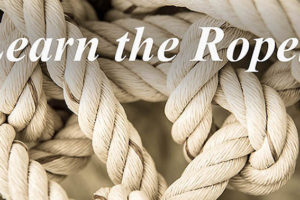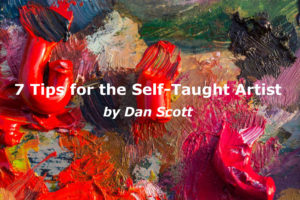A buyer of mine wanted one of my drawings painted with watercolors, cut out and attached to an interesting background. Basically, it would be a watercolor collage. Great … a new idea for my art and I agreed to the commission.
SEVERAL OF MY TUBES OF PAINT WERE HARD
I hadn’t used watercolors for about a year and many of the tubes had dried out. I had been studying techniques with oils — a laid back medium that doesn’t mind if you make mistakes. With oil paints if you make a mistake — you can fix just about everything. If the whole thing is a bust, you can gesso over it and presto! You have a brand new white surface to begin again. But somehow, I figured I could just use the colors that were close to what I wanted and just whip through this piece of art. It was small and wouldn’t take more than 10 minutes to do the color work. So, without taking time for any of the standard preparations I plunged in. Oops! — within two minutes I had ruined the first one. I admonished myself for breaking a basic rule.
I DIDN’T MIX ENOUGH PAINT
Okay … I was more careful the second time, but instead of mixing the colors I would need, I just loaded my brush with a bit of paint and carefully applied it. Uh oh, not enough paint to cover the area. The watercolor dried on the paper while I mixed another puddle of color. The paint edges were hard instead of being soft and continuous. I had two mistakes that couldn’t be rectified. I pitched the second effort into the wastebasket.
FORGETTING TO PROTECT THE BOARDERS
Two down and the situation was becoming ridiculous. A five-minute project had now racked up 15 minutes and no product to show for it.
The third time every possible mistake was considered and I ended up with a good painting. After gluing the background to the painted portion, I stepped back to give it the once over. Ach!!! Two tiny dots of soft pink had spattered onto the border. I couldn’t get them off. It could have been avoided by protecting the border with a separate piece of paper. The day was done and my small project would have to be done tomorrow.
A STURDY TOLERANCE FOR MISTAKES
If you are going to be an artist, you will need to develop a sturdy tolerance for the mistakes you make and those that just happen. “Sometimes paintings don’t go as planned. Learning to overcome that hurdle and finish a painting is what makes a great artist. The challenge behind the process of painting is what helps us grow as artists.”
WHEN PAINTINGS GO WRONG
If you aren’t in the arts, you probably don’t realize how many failures occur on the way to a finished piece. For each success, whether it be in art, music, photography dance, acting or sports, the pile of failures is staggering when compared to a beautiful outcome.
An acquaintance of mine who is a professional ballet dancer once said, all my worst and best work happens in the studio, not on stage. So there you have it. To be an artist means you will invest hundreds of hours of practice. Art is a solo event and you and I need a tough attitude toward our errors. They are how we learn and how we grow.




